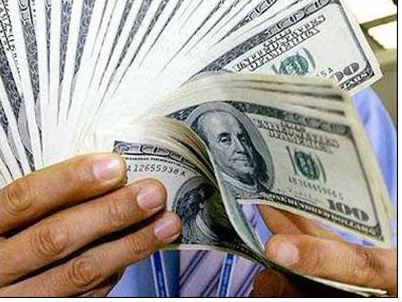Rising dollar lending not a concern

By mid-June 2014, lending in US dollars reportedly rose 10 per cent while deposits shrank considerably.
This is significant when compared to a 16.5 per cent contraction of dollar lending last year.
One of the main reasons many believe dollar lending is on the rise is that it is 4-5 per cent cheaper than taking out dong-denominated loans.
Banking expert Can Van Luc said the increase in dollar lending is attributable to upbeat export figures leading to resumed and/or expanded production.
Many economists, however, have expressed concern that if the trend continues, banks might lend more dollars than they can mobilise, thus posing a risk to their liquidity, particularly toward the year end when the loans come to maturity.
Also, increased lending in greenbacks could threaten to dolarise the local economy.
Member of the National Financial-Monetary Policy Advisory Council Le Xuan Nghia on the other hand said the rise in dollar lending was not a concern.
“While dong lending stayed stable, dollar lending suggests the economy is reviving,” Nghia said.
He added that many banks have kept their dollar stockpiles below the level set by the central bank as they were not worried about supply.
Similar to Nghia, Luc said increased dollar lending was of no worry, since the disbursed total only accounts for a modest 12-13 per cent of total outstanding loans.
Luc also said the possibility of banks racing to lend in dollars and thereby causing risk to their liquidity was unlikely, as banks are aware of the risk such an action would pose.
A central bank executive said the growth in dollar lending was under control and there was no cause for concern.
What the stars mean:
★ Poor ★ ★ Promising ★★★ Good ★★★★ Very good ★★★★★ Exceptional
Latest News
More News
- The promotion of ESG via banking (November 21, 2024 | 09:32)
- Standard Chartered committed to Vietnam’s financial success (November 21, 2024 | 09:24)
- Full ESG adoption the priority for Agribank (November 21, 2024 | 09:07)
- Banks entice youth with tech advances (November 21, 2024 | 08:00)
- ESG represents a shift towards sustainability for banks (November 20, 2024 | 13:00)
- GGGI supports Vietcombank’s debut of $80 million green bonds (November 20, 2024 | 11:20)
- SHB and the ESG journey: creating social value in every step (November 19, 2024 | 15:00)
- Banking sector contributes to ESG, green growth, and sustainable development (November 19, 2024 | 14:42)
- ESG implementation in banking: from awareness to action (November 19, 2024 | 12:08)
- VIR hosts 'ESG in Banking: Leading Through Implementation' conference (November 19, 2024 | 11:14)




















 Mobile Version
Mobile Version